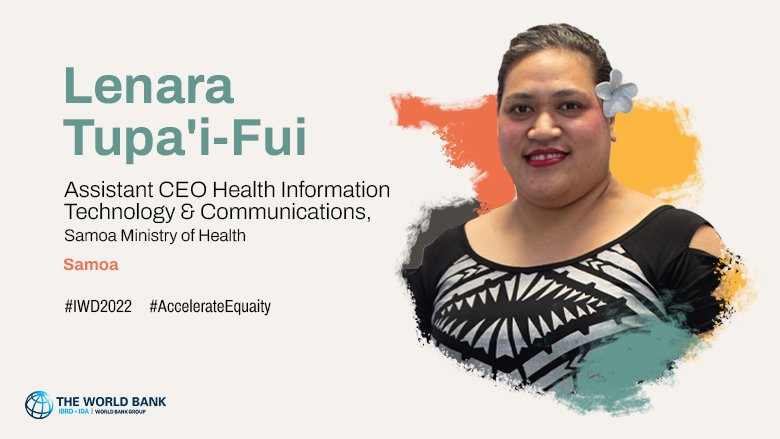Growing up, I loved watching criminal investigation TV shows, and I was particularly interested in forensic pathology shows. Biology was my favorite subject in school, but the only biology-related job we were encouraged to aim for was a doctor. I grew up in a time where many families in Samoa did not have computers, and the closest information and communication technology (ICT) device we had access to was a video player and a TV.
My father was the Technical Manager for the local television station back then, the government-owned TV Samoa, so my siblings and I were taught how to clean and fix video players in our free time. He never differentiated household chores based on whether you were a girl or a boy. Boys washed dishes and cleaned the house, and girls mowed the lawn and even fixed the lawn mower if it broke down. I eventually pursued a Bachelor in Computer Science with a minor in Biology, as I wanted to work in an area where biology and technology crossed over.
After graduating from university, I worked at two of the top computing businesses in Samoa. But I realized I was not interested in a career generating profit. I was interested more in working in areas where technology could help improve the daily lives of Samoans, so I took a job working in the Electoral Commission before moving to the Ministry of Education in the ICT Unit and later to the Health Information Technology and Communications Division of the Ministry of Health. Identifying ways to use technology to improve education or health services is very fulfilling. It’s always an inspiration when our technical solution solves a challenge that has prevented people from getting the best health and education.
We had done a great deal of preparation work for our eHealth system. In 2016 we connected all district health facilities to a local area network using the Samoa National Broadband Highway (SNBH). This meant the Ministry of Health became the only ministry to have all 12 health facilities interconnected and communicating.
The COVID-19 pandemic has taught us to seize every opportunity we get and make the most of it, and that was exactly what we did with our eHealth system, the Tamanu system. We created an immunization module that would allow us to record and manage data on COVID-19 vaccination rates. The system provides demographic information that visualizes the vaccination status of eligible populations of each district, each village, and each household. Soon, we were identifying each person on a map in real-time and we could visualize the status of vaccination, plan intervention programs, identify who had not yet had their vaccinations and visit their homes personally. This real-time information helped us know whether unvaccinated people were really in the country; or had left for seasonal work programs; or whether some people, like pregnant women, were no longer a part of the eligible population.
The implementation of these systems was successful due to the commitment and support of our leaders, from the Prime Minister and the Minister for Health to the CEO and management, as well as the Health Project Advisory Committee. These leaders fought in the international arena to obtain resources just as the entire world fought for attention and the need for the same.
It has been a tiring and emotional, but inspirational, two years and a fantastic way to start off our eHealth journey.
Creative, optimistic (there is no impossible in our dictionary!) and straightforward.
Firstly, communication is key. In the past two years decisions were made on the go - it would be a final plan at night, a new plan in the morning and ten minutes later a drastic change would require staff to say goodbye to their families in 10 minutes and travel off island. If communication is good staff will understand the urgency and the importance of the task they have been asked to perform, and can do it with so much happiness, like it’s the best thing they have ever done.
Secondly, sometimes you need to be cruel to be kind. Everyone has the potential to do great things. We just need to be honest and give our honest opinion of one another, and then be open minded to accept and learn from criticism. I find it is the only way to genuinely improve.
Finally, we don’t have to know everything. The biggest lesson for me was understanding my own weaknesses and building the strengths of those who had the expert knowledge and skills to address those weaknesses and complete certain parts of the work.
Prayer is a powerful tool. Always pray for your decisions and then let go and let God take the lead. Never be afraid to be different or original. You don’t always have to follow what everyone else is doing.
**The views expressed in this interview do not necessarily represent the views of the World Bank Group.

